7 Essential Parameters for Sizing Natural Gas Regulators
Selecting the proper natural gas regulator requires careful consideration of several technical parameters. Whether replacing an existing unit or specifying a new installation, this guide will help you understand the essential factors for proper regulator sizing.
Message us to Get Expert Regulator Sizing Help.
Understanding Gas Regulator Applications
Before sizing, understand the regulator’s purpose. There are four primary applications for gas regulators:
- Appliance Regulators: Manage gas pressure directly at an appliance or equipment
- Line Gas Regulators: Control the gas pressure between a service and appliance regulators
- Service Regulators: Reduce incoming service line gas pressure to the desired delivery pressure
- Pressure Regulators: Control and maintain the pressure of a specific portion of a pipe system
7 Critical Parameters for Gas Regulator Sizing
To select the appropriate regulator for your application, you’ll need these seven essential parameters:
1. Gas type
- Natural gas (methane)
- Propane (LPG)
- Other specialty gases
2. Pressure Requirements
- Inlet pressure (PSIG or inches WC)
- Required outlet pressure
- Maximum allowable pressure variation
3. Flow Rate Calculations
- Maximum flow requirement (CFH)
- Minimum flow requirement
- BTU/hour conversion (1 CF = 1,000 BTU)
- Peak load considerations
4. Connection Specifications
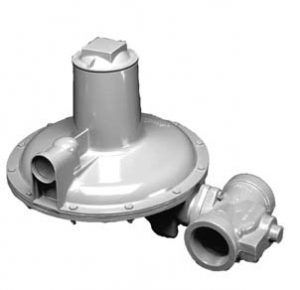
Itron B34 Regulator
- Inlet/outlet pipe sizes (Regulators typically ½” to 4”)
- Connection type requirements
- Installation space constraints
5. Installation Elevation
- Site altitude affects performance
- Atmospheric pressure compensation
- Temperature considerations
6. Environmental Factors
- Indoor vs. outdoor installation
- Temperature extremes
- Ventilation requirements
- Weather protection needs
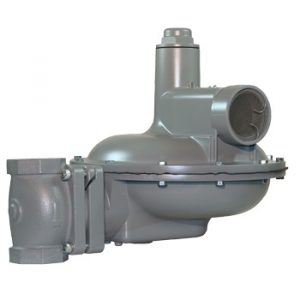
Belgas P212 Gas Pressure Regulator
Consider a line pressure regulator with a vent limiter and an overpressure protection device (OPD) if indoors. Learn more about Gas Line Pressure versus Appliance Control regulators.
7. Operating Conditions
- Noise requirements
- Vibration constraints
- Cycling frequency
- Downstream pressure stability needs
Are you looking for Gas Pressure Regulators?
We offer our clients the best products for their commercial, industrial, and utility market needs. We typically stock regulators from:
- BelGAS
- Itron (formerly Actaris, Schlumberger, Sprague)
- Maxitrol
- Honeywell (formerly Elster American Meter, Gorter)
- Dungs
Frequently Asked Questions About Gas Regulator Sizing
Q: How do I determine the correct regulator capacity for my application?
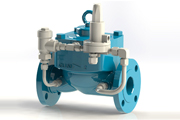
Honeywell HON 5020 gas pressure regulator
A: Calculate your maximum flow requirement in cubic feet per hour (CFH) by converting your BTU/hour requirement:
- Divide the total BTU/hour by 1,000 to get CFH
- Add 20% safety factor for peak demand
- Example: 200,000 BTU/hr ÷ 1,000 = 200 CFH minimum capacity needed
Q: What happens if I install an undersized regulator?
A: An undersized regulator can cause:
- Pressure drops during peak demand
- Equipment malfunction or shutdown
- Irregular heating or cooking performance
- Premature regulator wear
- System instability
Q: Should indoor regulators be sized differently than outdoor ones?
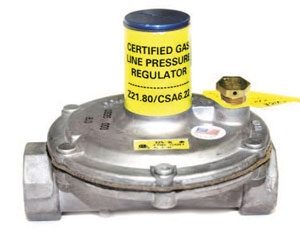
Maxitrol 325 L with vLimiter
A: Yes. Indoor regulators require:
- Vent limiters or internal relief valves
- Overpressure protection devices (OPD)
- Lower noise specifications
- Additional safety considerations for confined spaces
Q: How does altitude affect regulator sizing?
A: For every 1,000 feet above sea level:
- Regulator capacity decreases by approximately 3%
- Spring settings may need adjustment
- Outlet pressure requirements might change
- Flow calculations must be modified
Q: What’s the impact of inlet pressure fluctuation on sizing?
A: Higher inlet pressure variations require:
- Wider regulator operating range
- More conservative sizing
- Additional safety factors
- Possible pressure monitoring
- Consider using a two-stage regulation system
Q: When should I consider a two-stage regulation system?
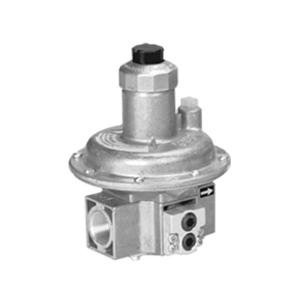
Dungs FRS Line Pressure Regulator
A: Consider two-stage regulation when:
- Inlet pressure exceeds 10 PSI
- Wide load variations exist
- Tight outlet pressure control is needed
- The system serves multiple appliances
- Enhanced stability is required
Q: How do temperature changes affect regulator performance?
A: Temperature impacts include:
- Changes in spring rate
- Diaphragm flexibility variations
- Condensation concerns
- Freeze-up potential
- Material expansion/contraction
Q: What safety factors should I include in sizing calculations?
A: Include these safety margins:
- 20% additional flow capacity
- Maximum inlet pressure rating +10%
- Minimum inlet pressure -10%
- Temperature range extremes
- Future system expansion needs
This FAQ section addresses the most common questions we receive from customers. Please contact our technical team for detailed assistance with specific applications or unique requirements.
Expert Assistance Available
Our technical team can help you select the proper regulator for your application. Contact us at 303-697-6701 or submit your specifications through our online form.
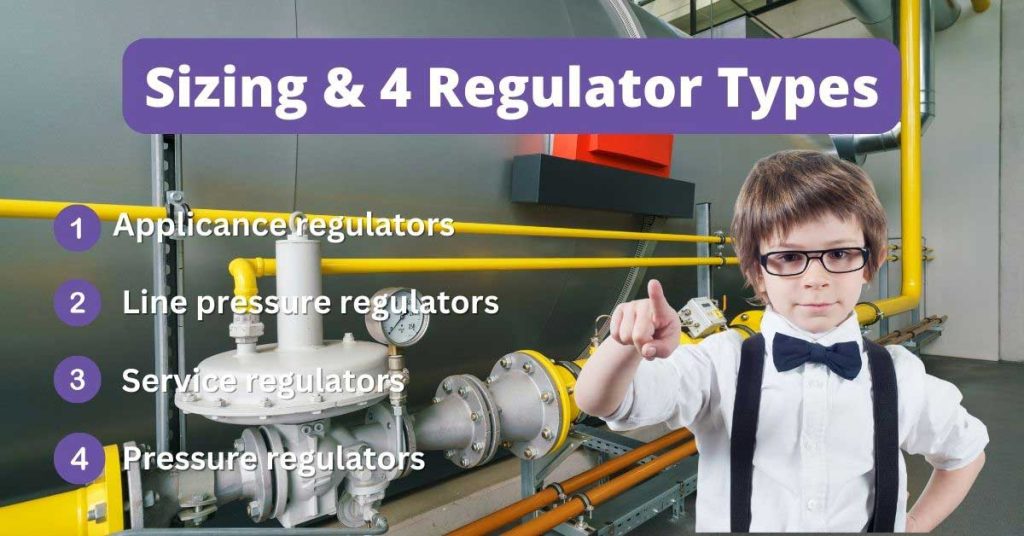
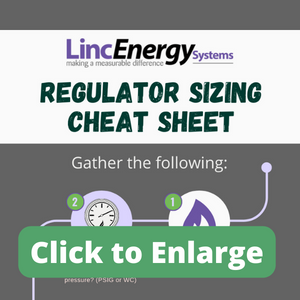
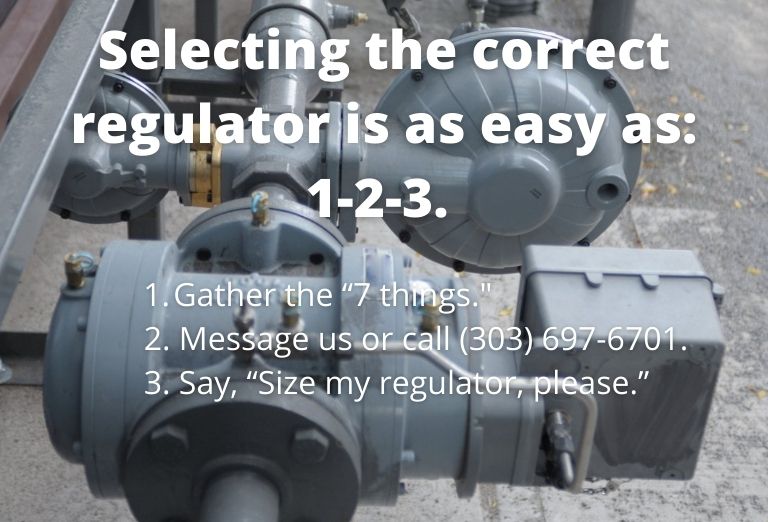

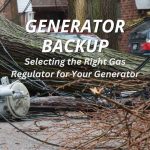
Hi
I have a natural gas well on my farm
Has been for over 80 years.
They use it to heat hose and run gas lights.
Then just just a hot water heater.
They told me it lost it pressure.
I unhooked it from house from a regulator and found it has 21psi.
We hooked up to a paint regulator
Cutting the pressure down as low as we could hook up to a natural gas furnace and it burned very clean, and the durance cycled.
Question; need to know how or what size of regulator I will need to cut pressure down from 21psi in to about 3psi to run a 120 btu boiler?
LPG is also knowns as Liquefied Petroleum Gas or Liquid Petroleum Gas. LPG is simply a mixture of hydrocarbon gases like propane or butane etc are commonly used as fuel in heating appliances, hospitality, calefaction, construction, sailing and fishing sectors, and vehicles. It is used as an aerosol propellant and a refrigerant. Liquefied Petroleum Gas is mainly for cooking in many countries for economic reasons because is is one of the best-preferred fuel sources.
I am really impressed after reading this blog post. I would like to thank you for sharing this amazing post with us and i will share it too.
The Gas Pressure Regulators market was valued at Million US$ in 2017 and is projected to reach Million US$ by 2025, at a CAGR of during the forecast period. In this study, 2017 has been considered as the base year and 2018 to 2025 as the forecast period to estimate the market size for Gas Pressure Regulators.
Pipe Size. Is that the required outlet pipe size? If so, is there typically a pipe transition on the inlet to a regulator due to the inlet pipe being smaller than the outlet? Thank you.
Ok a guy wants to run a natural gas line from his house to outside to a generator then a stub up for a outdoor kitchen then about a 1000ft to another generator for a guest house then to the guest house for the option of propane or natural gas because he already has propane but I just am having trouble figuring out how many BTUs so how many and or what kind of regulators?and also how much I should charge to do a job of the sort ? it’s about 1120ft run
Hello
I have a mobile home and the furnace runs on propane gas.
The input pipes into the house are 3/4 black steel and are approx 30’ long
Which gas regulator do i need to use?